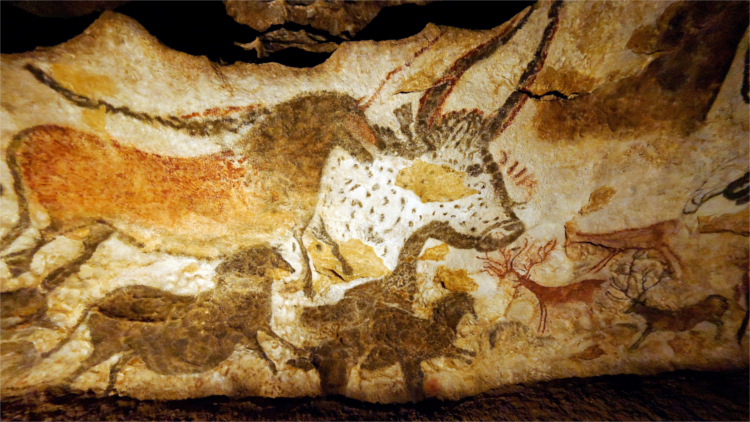Far From Antisocial Behaviour Street Art Was Raised
During World War 2, the phrase ‘Kilroy was here’ accompanied a sketch of a bald-headed long-nosed man peeking over a fence. It appeared all over the world, arguably the first ever meme. And this was long before the internet and social media. This graffiti was, in fact, a sign of U.S. military presence. Allied militia could be reassured by the cartoon’s appearance, its humorous composition distinct from the Nazi’s swastika. Others, on their side, had been there before them and vandalised whatever surface they could with Kilroy. Though ‘Kilroy was here’ became more like an in-joke for troops, its objective is adapted into street art today.
This snippet of history is interesting to consider. Street art has often been presumed to be stemmed from graffiti, which in turn stems from vandalism and antisocial behaviour. But, when considered not as a nuisance but rather for its artistic merit, would the cave paintings at Lascaux not be the place to start? This cave in the south of France features over 2000 images dating from 15,000 B.C. Art in a public rather than site specific space is closer what we consider street art than any other art-form, justifying its integrity that seemed to be lost for a few decades. In Ireland, street art has already shifted from nuisance vandalism to capitalised gallery purchases to politically motivated art.

For example, in 2015, Joe Caslin’s piece for the marriage equality referendum was erected at the Georges St. junction. It was unmissable to passersby; it fulfilled its function to encourage people to talk, as well as supporting the YesEquality campaign. It can be seen as a huge stepping stone for Ireland; in what is historically a quintessentially Catholic country, we could erect a mural depicting a same-sex relationship in the middle of the capital. But perhaps it also shows how much further street art can go to connect with a society and capture the zeitgeist. Following the unveiling of his new mural, this time located within Trinity College’s Front Square, Caslin said;
“I believe the artist has a valued place in Irish society and that we are ‘cultivators of empathy’. Our role is to be observant at all times and to do our best to create and give feedback. To hold a mirror up; to advocate and to provoke.”
Where better a place to provoke dialogue than on the streets? Through no fault of their own, galleries will always have limits as spaces for open discussion for all members of the community. However, street art sheds all barriers and allows for people to be engaged. Perhaps then it is time to treat street art projects with the same revere as other mediums of visual art. With the glut of street art books available, learning about the medium is important in understanding its place in art and activism. Like a good meme, like ‘Kilroy was here’, street art’s role in society will and should spread like wildfire.
